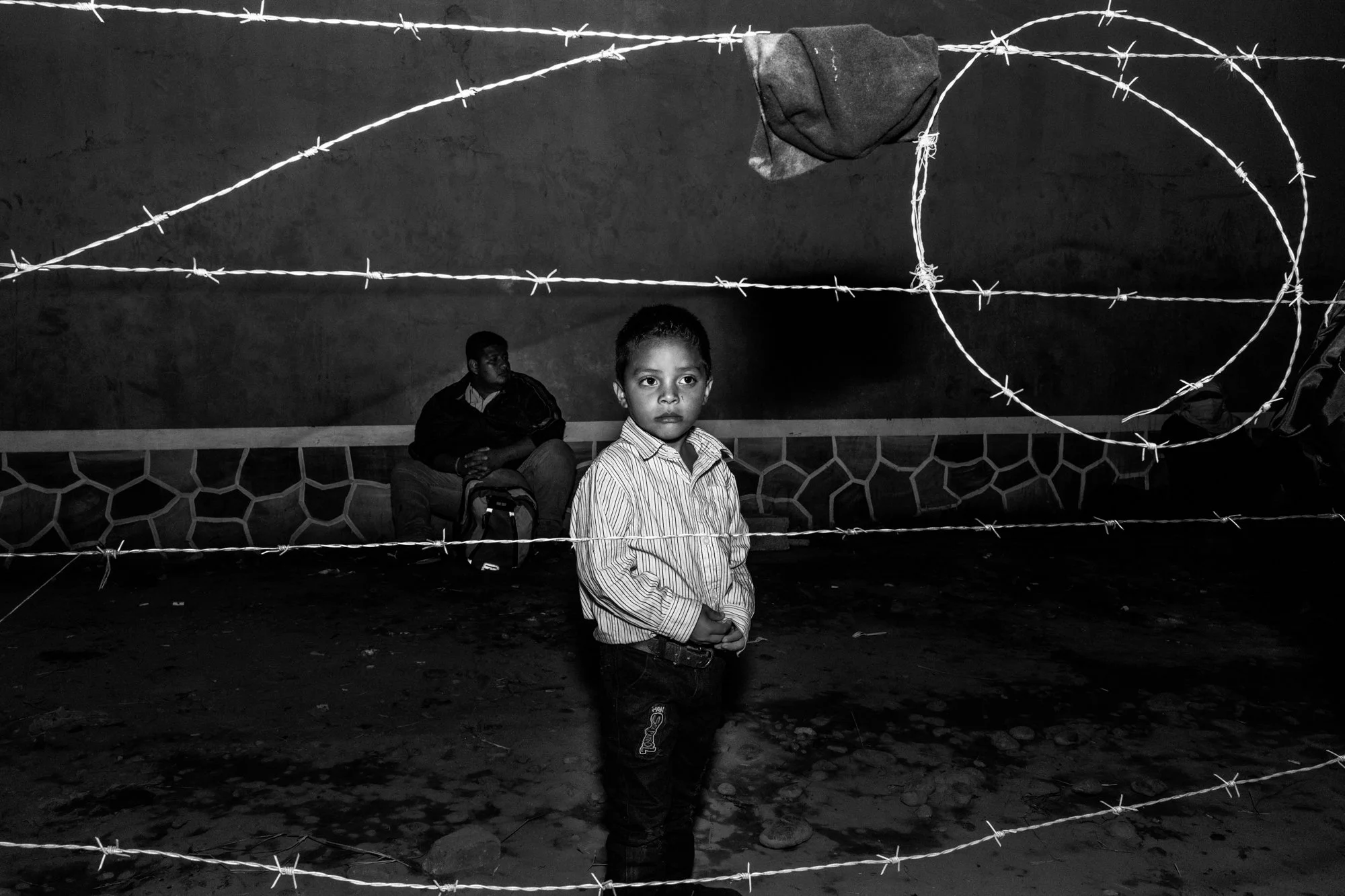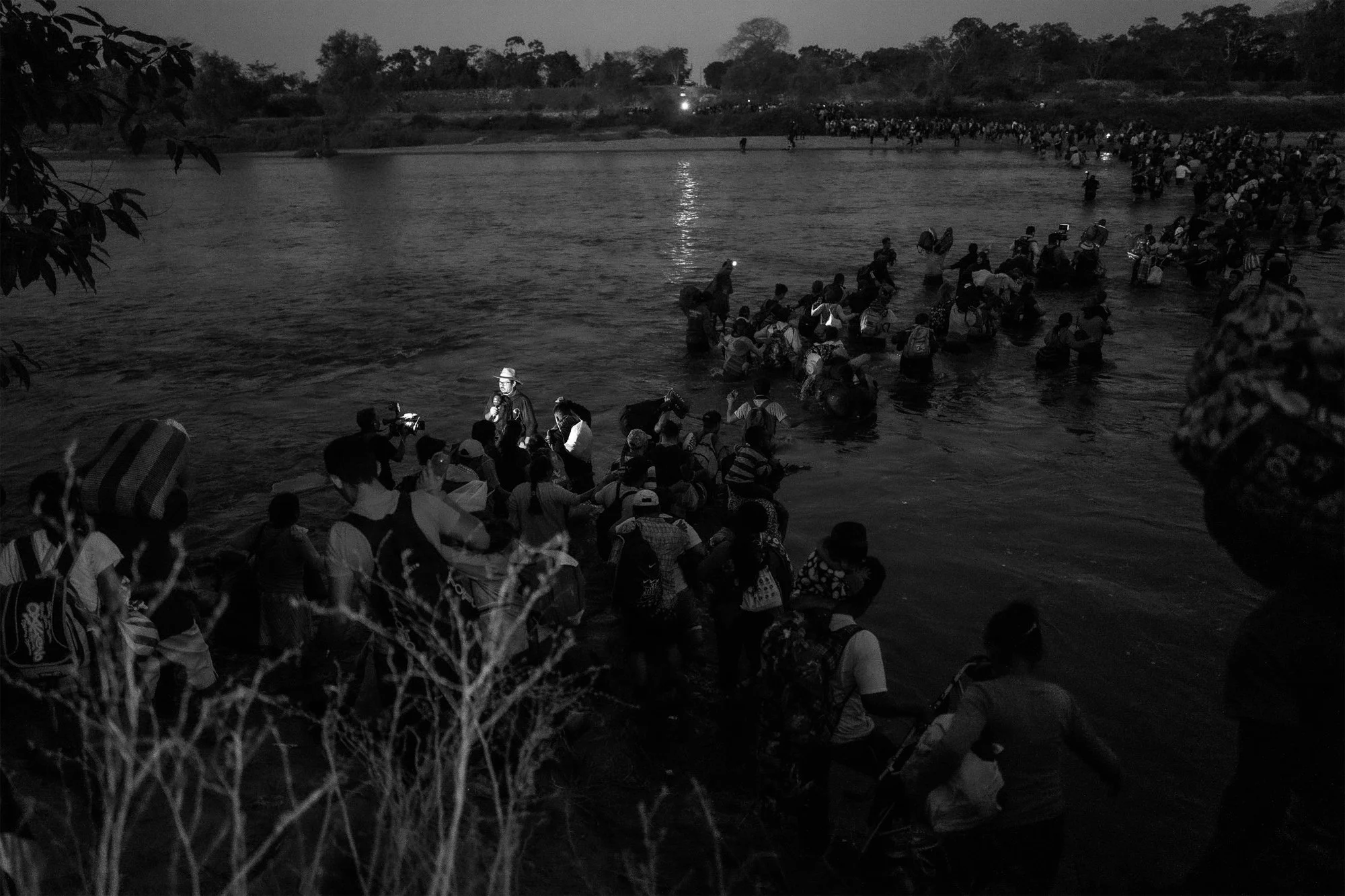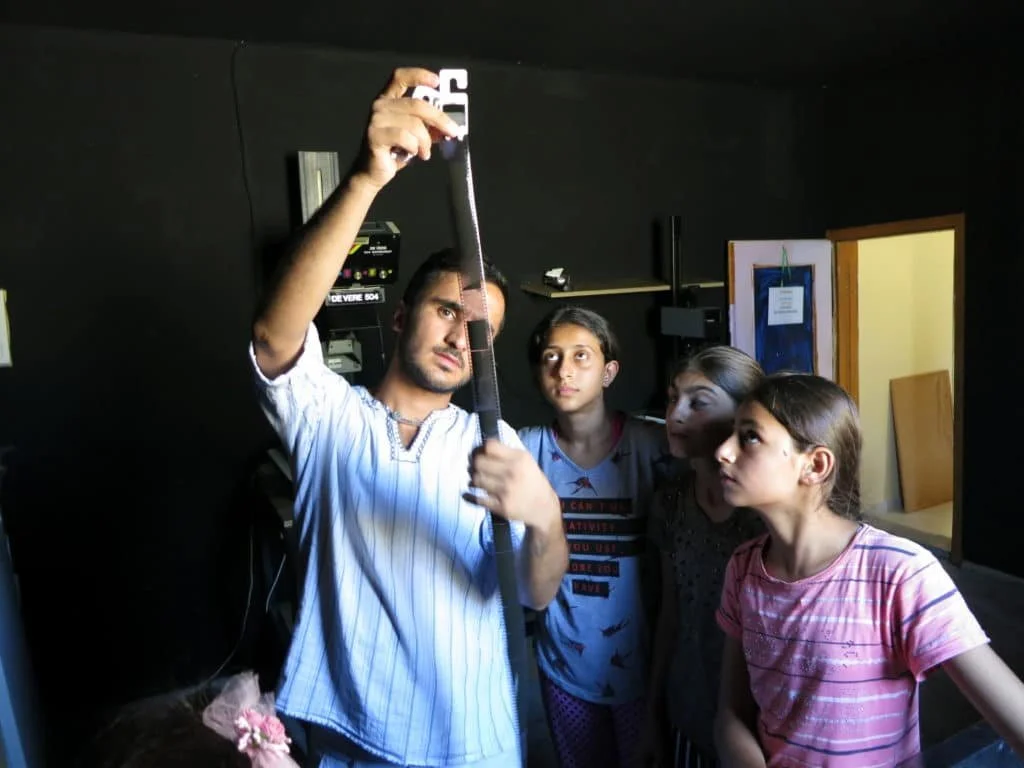Ada Trillo & the Sirkhane DARKROOM
March 24th, 2023 to June 4th, 2023
© Ada Trillo
© Refai, 12 years old
Ada Trillo and the children of the Sirkhane DARKROOM make visible the stories we might wish to vanquish from our minds; that to be a refugee is to be forced from your home - your country - to escape something so horrific that staying is no longer an option. And yet, even in these moments of extraordinary trauma, we bear witness to resolve for something better. From individuals traveling alone, to doting parents, and exuberant children surviving at the margins. Ada Trillo has photographed the migrant caravans traveling through Honduras, Guatemala, and Mexico since 2020 and Serbest Salih, a Syrian refugee in Turkey, who founded the Sirkhane DARKROOM has provided children with the opportunity to express themselves through photography.
Opening Reception
Friday, March 31st, 6:00pm–8:00pm
Artist Panel with Ada Trillo + Book Signing
Friday, April 21st, 6:00pm–8:00pm
Ada Trillo
La Caravana Del Diablo
© Ada Trillo“ In January of 2020, fleeing violence and poor economic conditions, Hondurans organized a massive migrant caravan that traveled through Guatemala into Mexico. After traveling for 8 days the caravan crossed the Suchiate River into Mexico and were met by the recently established Guardia Nacional comprised of former Federal, Military and Naval Police.
Mexican President, Andrés Manual López Obrador, has historically called for safe passage for migrants, but when US President Donald Trump threatened to impose tariffs, Mexico reversed its policy and deployed soldiers to keep central American migrants from entering Mexico.
Migrants attempting to enter Mexico split into two major groups. The largest group crossed the Suchiate River and were tear gassed by the Guardia Nacional. Forced to retreat they waited by the river's edge for two days. Their second attempt across the river (at four in the morning) was a success but it was only hours later that the Guardia Nacional surrounded them, put them on busses and sent them back to Honduras.
The smaller group amassed in the border town of El Ceibo in Guatemala and were met by the head of foreign relations in Mexico. He welcomed migrants in groups of 10 to enter Mexico and seek asylum. Migrants were briefly kept in detention centers and against The head of foreign relation word they were deported back to Honduras without given the opportunity to seek asylum.
Trump has effectively barred asylum seekers from entering the US by threatening to impose tariffs and cut foreign aid to Central American countries. The human cost of Trump’s political agenda is denying people their fundamental human rights. For many asylum seekers, deportation will result in living a life of extortion, impoverishment and even death. The full effect of Trump's xenaphobic policies toward immigrants and asylum seekers will no doubt be felt for generations to come.”
– Ada Trillo
The Sirkhane DARKROOM Project
© Rojin, 14 years old“The Syrian photographer Serbest Salih had just finished university, in 2014, when the Islamic State laid siege to his home town of Kobani. He fled to the Turkish province of Mardin, just over the border, where tens of thousands of Syrian refugees have settled during the past decade’s civil war. A multiethnic conflict zone at the edge of Mesopotamia, Mardin is home to a community center called the Sirkhane Social Circus School. Under the tutelage of volunteer instructors there, children affected by war learn to juggle, spin plates, and walk on stilts.
In 2017, Salih started a photography workshop at Sirkhane, teaching students to shoot and print their own analog photographs. A few years later, he began leading the workshop from a mobile darkroom in a secondhand caravan, packing up his materials every month to drive to a different village and a new group of kids. “When I show the children how to develop their photos, I am always awe-struck by their reactions,” he writes, in “I Saw the Air Fly,” a new collection of the children’s photography, from Mack Books. “Many of them really believe at first that it’s a type of magic.”
Salih’s students include local Turks and Kurds as well as displaced natives of Syria and Iraq. One aim of the workshop is to improve neighborhood relations, uniting children from communities that might otherwise remain isolated owing to linguistic and cultural barriers. “I Saw the Air Fly,” which gathers more than a hundred black-and-white images, features grand landscapes of Mardin’s hilltop district, intimate depictions of domestic life, and whimsical scenes of acrobatics—a boy hula-hooping in a dimly lit kitchen, a pair of children practicing their bridge poses, bellies thrust to the sky.
The directors of the Sirkhane circus school admit, in their mission statement, that Mardin is “a region where it is not easy to be a child.” But the pictures in Salih’s series continually disrupt expectations of young refugees as benighted figures or objects of pity. The book takes its title from a poem by the Syrian modernist Adonis, and its dominant mood is not gritty realism but a dreamy playfulness. In one group portrait, overexposure nearly erases a jump rope held by two friends at opposite ends of the frame. The young girl between them seems suspended in flight, her limbs blurred and her ponytail still rising in the moments before she must return to the ground.”
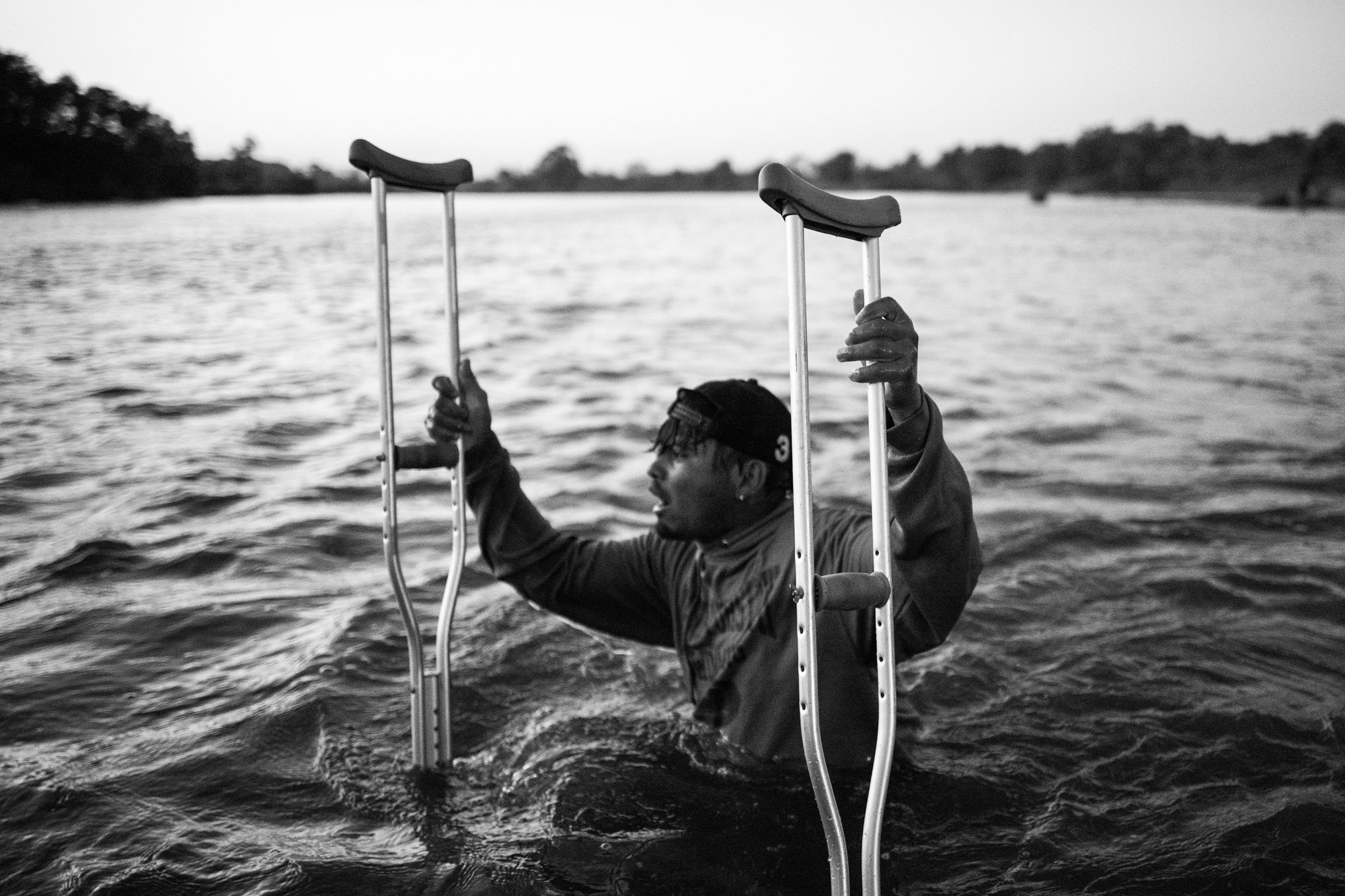

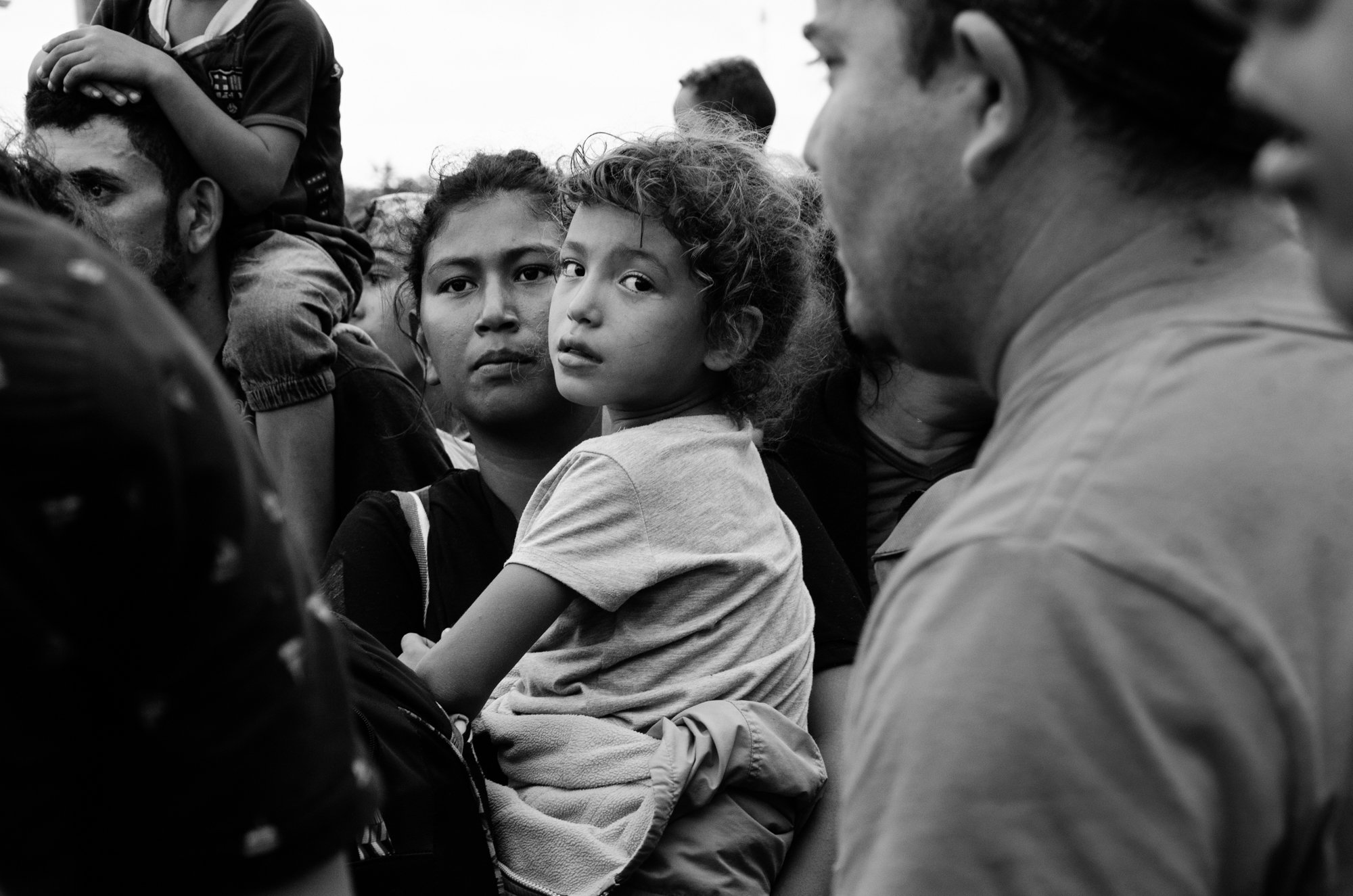

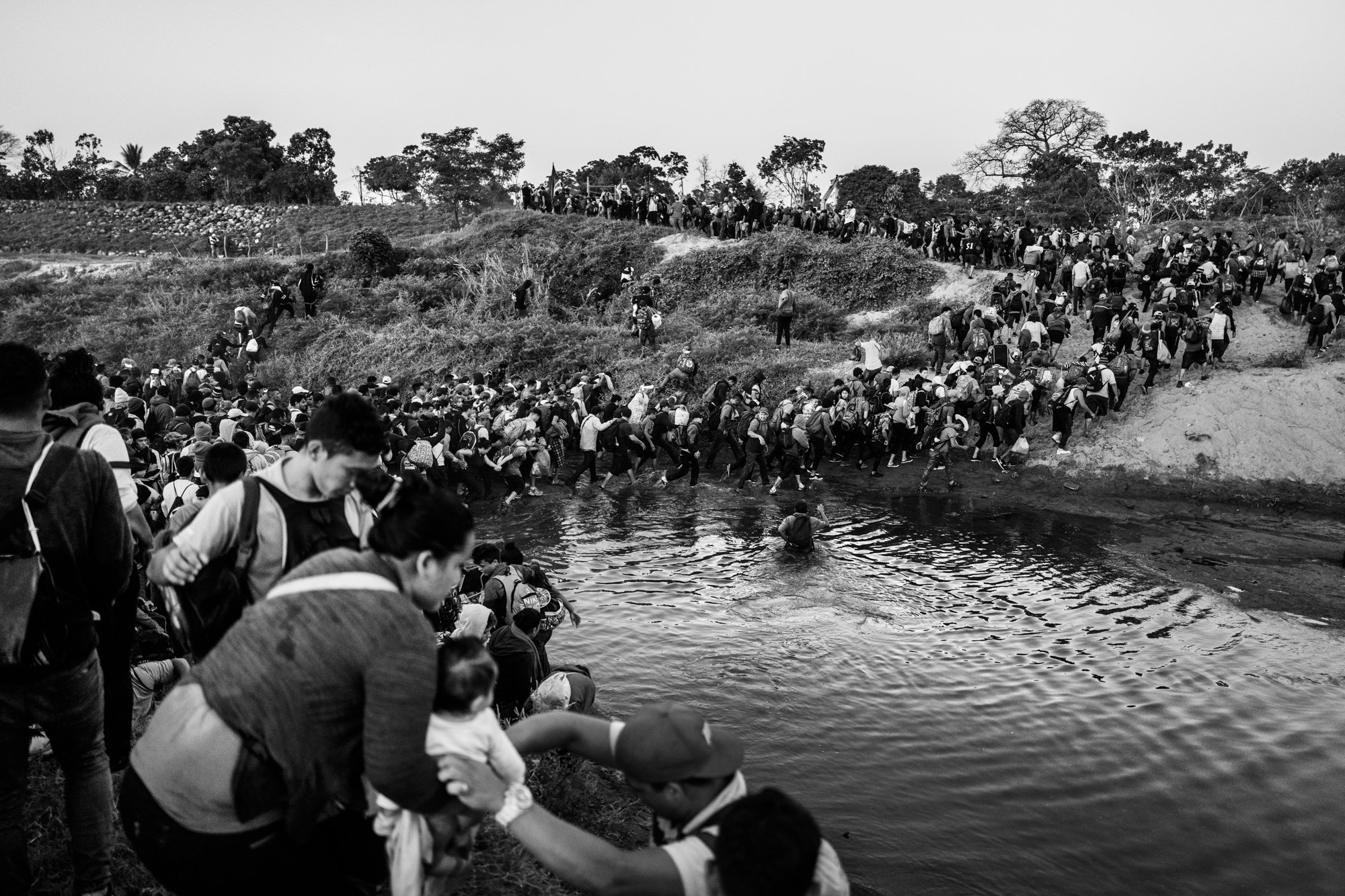


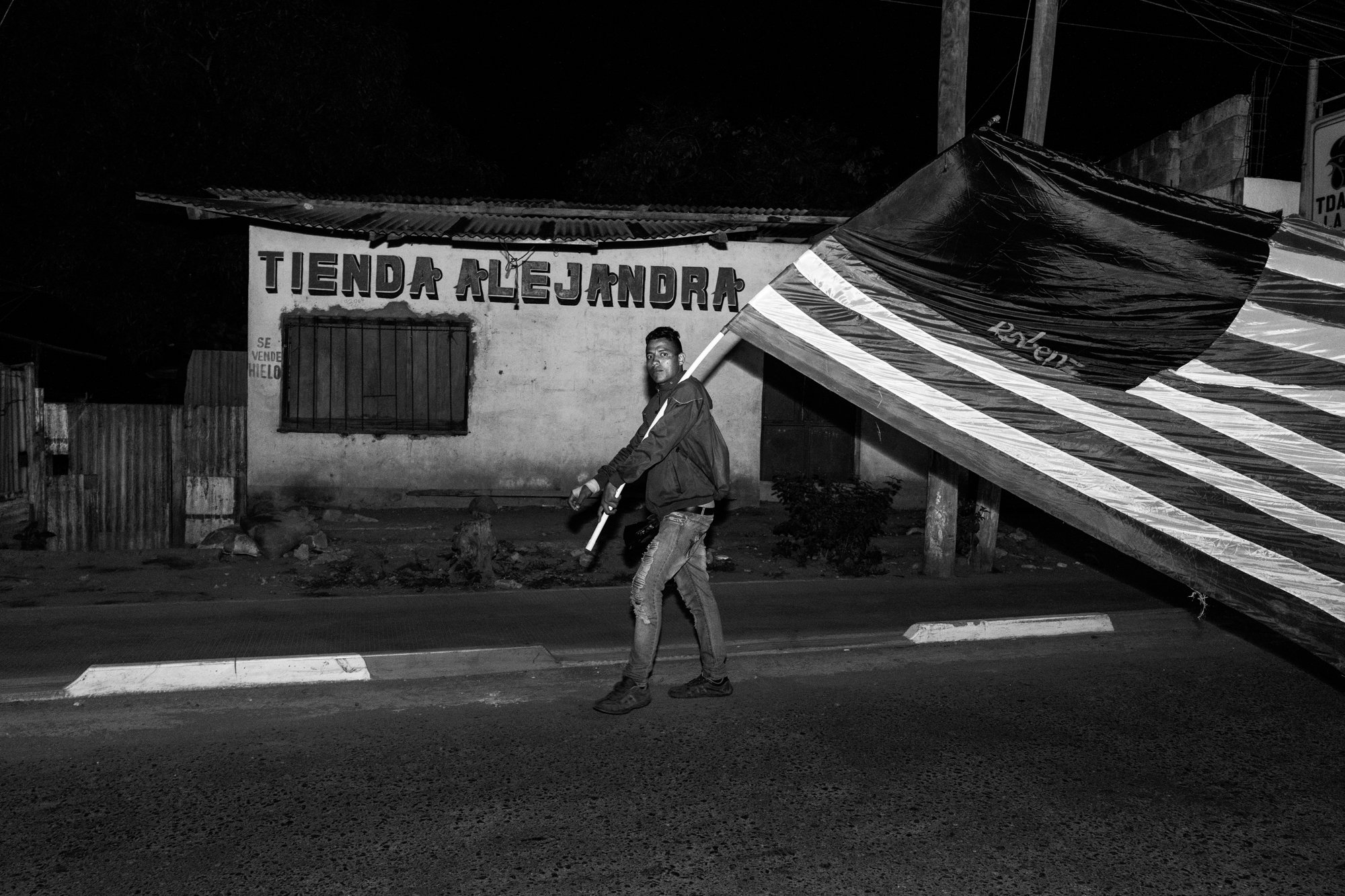

About the Artist, Ada Trillo
Born and raised in the U.S./ Mexican border region of Juarez and El Paso, Ada Trillo is a first-generation Mexican-American photographer. Currently based on the East Coast, Trillo’s photographic work focuses on human displacement, socioeconomic and humanitarian crises, and the profound social, political, and cultural transformations that show how poverty, gender, and structural exclusion and inequality have a particular incidence among women and children.
Her photographs have been featured in international publications, including The Guardian, Vogue, Smithsonian Magazine, and Mother Jones. Trillo's work is in the permanent collection of the Library of Congress, the Philadelphia Museum of Art, and other institutional and private collections.
Awards include The Pew Center for Arts & Heritage Fellowship (2022), The Eddie Adams Workshop Canon Award (2022), The British Journal of Photography Female In Focus Best Series Award (2020), and The Me & Eve Grant from the Center of Photographic Arts in Santa Fe (2020).
Trillo's first monograph, La Caravana Del Diablo: On the Run from the Northern Triangle to America was published by Komma (Netherlands, 2021). The book chronicles seven years of traveling with refugees and migrants from Central America to the U.S.-Mexico border.
Her photographs have been included in solo and group exhibits in the United States, Japan, Luxembourg, Italy, England, France, and Germany. Trillo holds degrees from the Istituto Marangoni in Milan, Drexel University in Philadelphia, and the International Center of Photography in New York, with a concentration in Documentary Practice and Visual Journalism.
About Sirkhane DARKROOM and director Serbest Salih
“My name is Serbest Salih, and I am a photographer from Kobane, Syria. I’m the director of Sirkhane DARKROOM, a non-profit mobile darkroom and photo lab dedicated to underprivileged but incredibly talented children from Syria, Turkey, and Iraq. Our darkroom operates in the southeast of Turkey, a few kilometers from the Syrian border. DARKROOM is a photography school for vulnerable children of Syrian, Kurdish, Iraqi and Turkish origin under the organization Sirkhane Social Circus School. In DARKROOM, children learn how to take meaningful photos, develop analog images, and print them. They learn how to create beauty and joy out of the darkness of their past and present.
In Sirkhane DARKROOM, we teach our students from the local community, tiny villages, and remote places how to shoot, develop and print their photos. We initially started this project as a therapeutic process for children traumatized by war and violence, but when we began observing the incredible works of art created by our children, we realized that we are training outstanding artists of the future, which brought a different energy into our classes and to us. One of Sirkhane DARKROOM's core principles is believing in the power of storytelling and using photography as a medium that can expand the children’s perspective of their world and surroundings. By encouraging a new way of thinking and seeing through photography, our children have the chance to remain playful while sparking their imagination - the resulting photos are ones of happiness, light, and hope.
Our vision for Sirkhane DARKROOM's future is to continue taking our darkroom to more villages so more children can be part of our artist collective. In recent years, numerous children have been affected by the COVID-19 pandemic due to a lack of access to education, culture, and beauty. We aim to take our darkroom to them and their communities; for this, we need to look for more sustainable ways of running this project for them. For example, we initiated and continued our project using inexpensive pinhole cameras that are easy to construct and repair. We also incorporate their photography into our social media outlets to reach out to the entire world and all the artists around the world who might find their work intriguing.”
– Serbest Salih
Questions?
For questions about this exhibition, please contact André Ramos-Woodard,
Exhibitions and Programs Coordinator, at andre@hcponline.org or 713-529-4755, ext 16.

